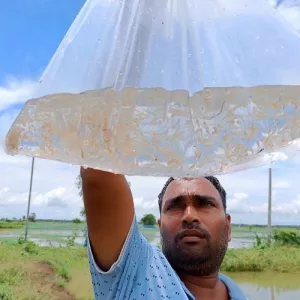Cracking the code of mola mass production boosts nutrition-sensitive aquaculture in India
Undernutrition is one of India’s most serious development challenges. The recent National Family Health Survey reveals alarming levels of childhood malnutrition, with 36 percent of Indian children stunted and 32 percent underweight. Aquatic foods such as fish are an excellent source of protein, minerals, vitamins and essential fatty acids that can play a vital role in the fight against malnutrition. Read more.

Cracking the code of mola mass production boosts nutrition-sensitive aquaculture in India
Undernutrition is one of India’s most serious development challenges. The recent National Family Health Survey reveals alarming levels of childhood malnutrition, with 36 percent of Indian children stunted and 32 percent underweight. Aquatic foods such as fish are an excellent source of protein, minerals, vitamins and essential fatty acids that can play a vital role in the fight against malnutrition.

